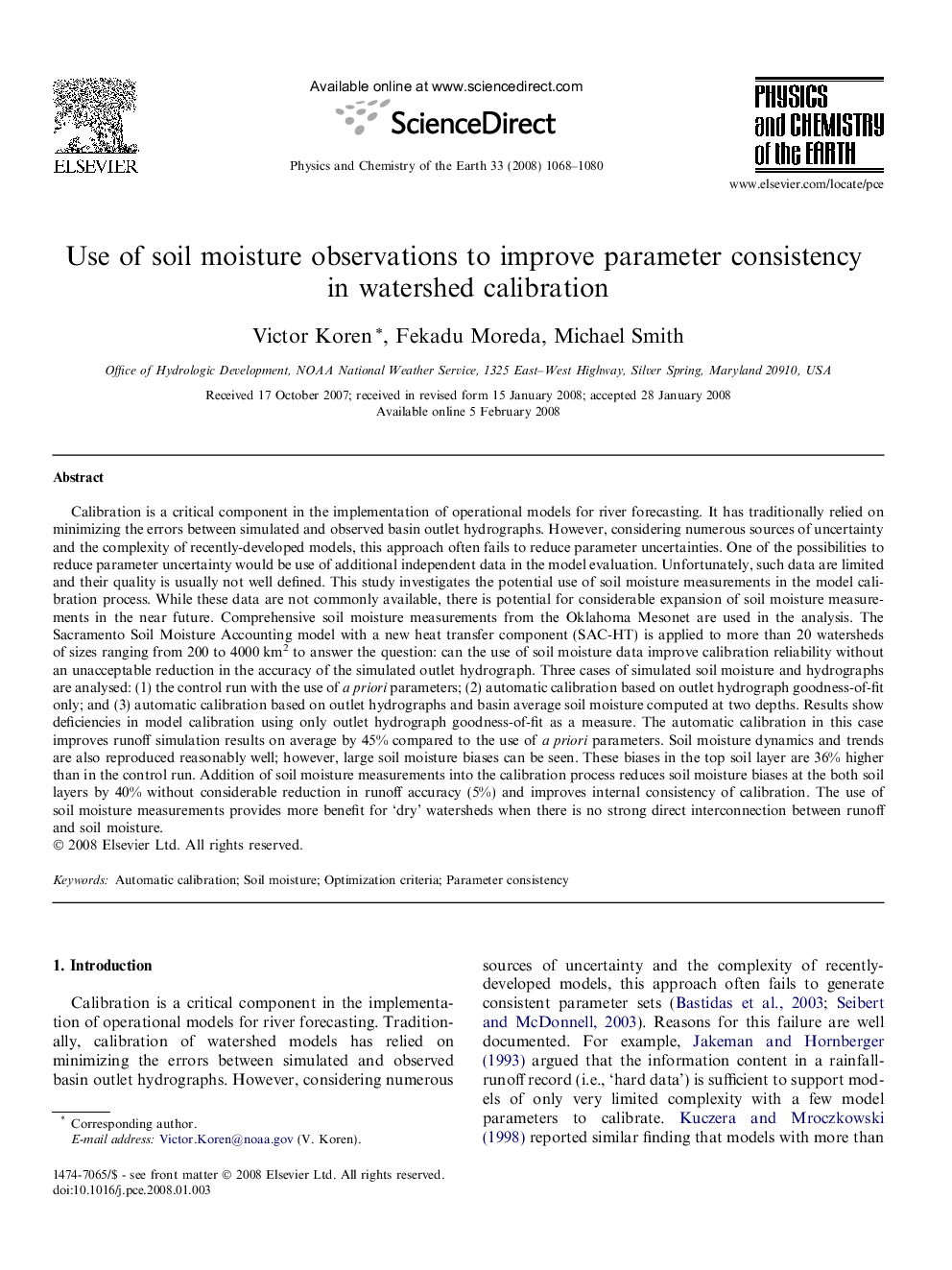| Article ID | Journal | Published Year | Pages | File Type |
|---|---|---|---|---|
| 4721450 | Physics and Chemistry of the Earth, Parts A/B/C | 2008 | 13 Pages |
Calibration is a critical component in the implementation of operational models for river forecasting. It has traditionally relied on minimizing the errors between simulated and observed basin outlet hydrographs. However, considering numerous sources of uncertainty and the complexity of recently-developed models, this approach often fails to reduce parameter uncertainties. One of the possibilities to reduce parameter uncertainty would be use of additional independent data in the model evaluation. Unfortunately, such data are limited and their quality is usually not well defined. This study investigates the potential use of soil moisture measurements in the model calibration process. While these data are not commonly available, there is potential for considerable expansion of soil moisture measurements in the near future. Comprehensive soil moisture measurements from the Oklahoma Mesonet are used in the analysis. The Sacramento Soil Moisture Accounting model with a new heat transfer component (SAC-HT) is applied to more than 20 watersheds of sizes ranging from 200 to 4000 km2 to answer the question: can the use of soil moisture data improve calibration reliability without an unacceptable reduction in the accuracy of the simulated outlet hydrograph. Three cases of simulated soil moisture and hydrographs are analysed: (1) the control run with the use of a priori parameters; (2) automatic calibration based on outlet hydrograph goodness-of-fit only; and (3) automatic calibration based on outlet hydrographs and basin average soil moisture computed at two depths. Results show deficiencies in model calibration using only outlet hydrograph goodness-of-fit as a measure. The automatic calibration in this case improves runoff simulation results on average by 45% compared to the use of a priori parameters. Soil moisture dynamics and trends are also reproduced reasonably well; however, large soil moisture biases can be seen. These biases in the top soil layer are 36% higher than in the control run. Addition of soil moisture measurements into the calibration process reduces soil moisture biases at the both soil layers by 40% without considerable reduction in runoff accuracy (5%) and improves internal consistency of calibration. The use of soil moisture measurements provides more benefit for ‘dry’ watersheds when there is no strong direct interconnection between runoff and soil moisture.
